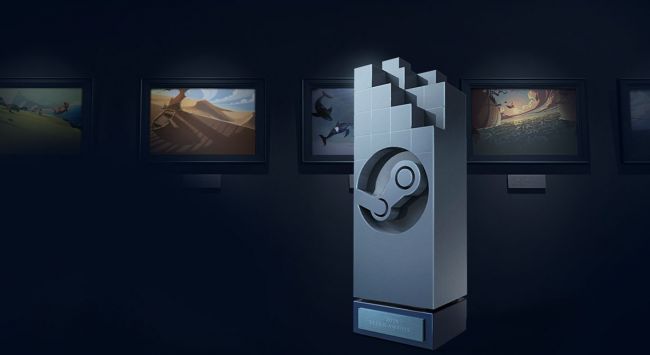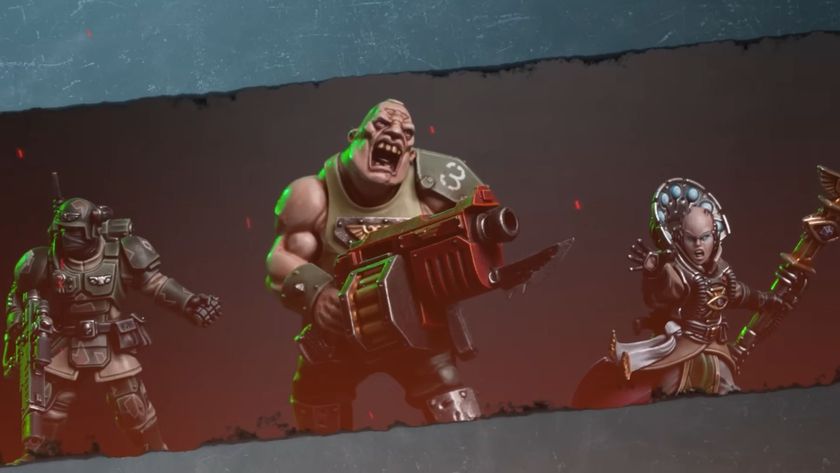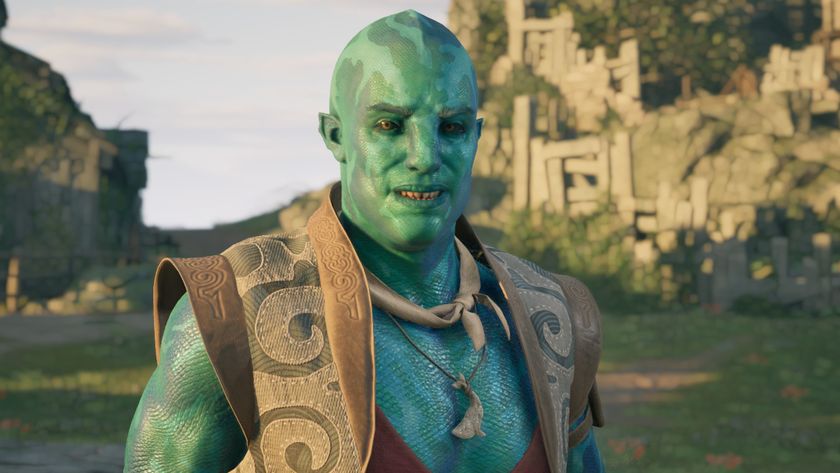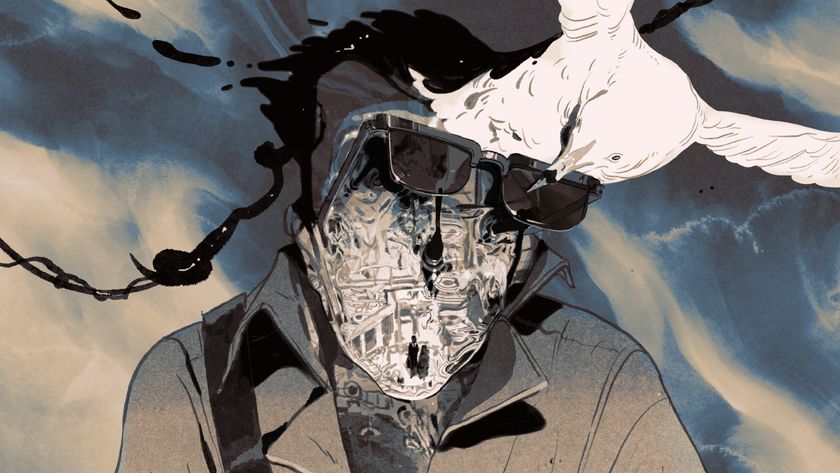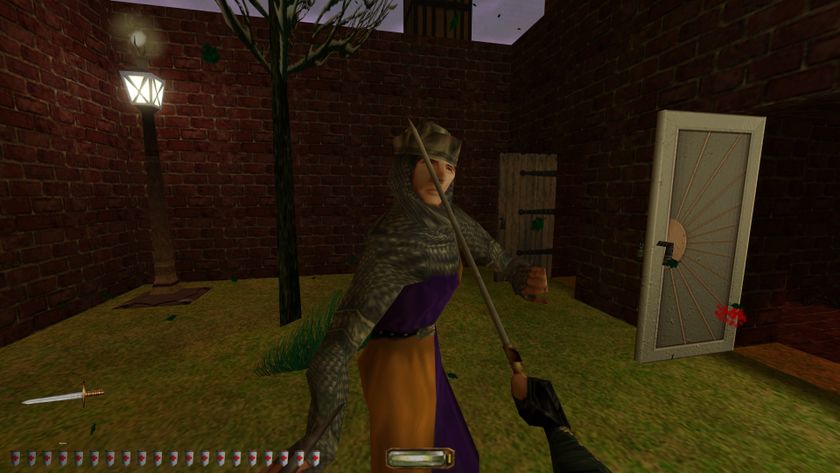Virtual worlds are already better than the metaverse will ever be
From Second Life to Habbo Hotel, we've been visiting the so-called metaverse for decades.

The metaverse is here! Listen to Mark Zuckerberg long enough and you'd be convinced we're about to embark on a bold, new virtual frontier—an unexplored realm of digital avatars wearing garish NFT sneakers, holding business meetings on the surface of the moon using AR glasses.
The metaverse is bullshit for many reasons, an ill-defined buzzword that attempts to encapsulate all the worst parts of the internet in 2021 (NFTs, cryptocurrencies, ever-present advertisements and rampant privacy concerns). At its core, though, are a handful of tech billionaires seeking to recreate the virtual online worlds of Snow Crash, Ready Player One and The Matrix. A wholly digital world where you can be anything, do anything, and engage in an entirely new and rampant form of consumerism.
Hold on, Mark. That's Second Life. What you're asking for is Second Life.
Enter the Matrix
Second Life, in case you're unaware, is a sprawling virtual world largely moulded by its own players. Developer Linden Labs has created its own fair share of spaces, but most locations are owned and designed by players, using scenery frequently created by other players using built-in modelling and scripting tools. Avatars can let you embody an average joe or a much sexier joe, or vampires, anthropomorphised animals, boy mayors, really anything else you can cobble together—either by yourself or using parts bought from other players.
If you were aware of games in the mid-'00s, you probably also remember all the stories of people making it big on Second Life. With million-dollar real estate barons making bank selling virtual land, brands also got interested—but as Second Life filmmaker Bernhard "Draxtor" Drax tells me, the Second Life audience wasn't interested in being marketed to.
Virtual worlds help our players come to terms with who they really are.
Jessie May
"There's a lot of stories like, Adidas came in saying 'we've got to go into Second Life because there's millions of people and we got to put our billboard in front of them' and they built a really crappy Adidas mall and nobody showed up," said Drax.
"It's hubris, basically. Why would anybody go into a lame Adidas mall in Second Life when Second Life has an interactive Metropolis or an immersive experience for some Battlestar Galactica roleplay? Why would you go to the Adidas store?"
The biggest gaming news, reviews and hardware deals
Keep up to date with the most important stories and the best deals, as picked by the PC Gamer team.
You can already see the parallels with current metaverse thinking. Hyundai's out here planning to let Roblox players drive its cars in a so-called "Mobility Adventure". And while giving your avatar branded shoes is one thing, it's hard to imagine a metaverse giving you the accurate, tactile feeling of actually test-driving a real car.
"A carmaker who wants to make a presence in the metaverse isn't going to run ads," Epic Games' Tim Sweeney said back in September. "They're going to drop their car into the world in real time and you'll be able to drive it around. And they're going to work with lots of content creators with different experiences to ensure their car is playable here and there, and that it's receiving the attention it deserves."
But even if you put in a monumental amount of work and manage to create a fake car that feels real, Drax is doubtful that's what people are even looking for in a virtual world. After all, in a space where you can be anyone and do anything, why would you choose to be your regular old self driving a regular old car?
For seven years Drax has been documenting the smaller, more personal side of the Second Life community, one he tells me has continued to thrive even as Second Life largely receded from the public eye. His documentaries focus on the ways people use Second Life to overcome disability; explore how the Black Lives Matter movement manifested in the game; or simply record regular book clubs held inside Second Life.
Virtual virtual reality
Of course, the big pitch for the current metaverse wave isn't just that it'll be a secondary virtual world. It's that, through VR and AR, the metaverse will be layered seamlessly over our actual reality. Facebook (sorry, Meta) wants you to stick wee plastic nipples on your furniture to track it in cyberspace, while Microsoft envisions a world where you can't alt-tab out of a business meeting because you'll be experiencing it through the eyes of a 3D avatar.
But, again, VR in the metaverse is hardly a fresh new idea. Dubbed Sansar, Linden Labs' own VR follow-up to Second Life hoped to be an ultimate encapsulation of the metaverse dream—a genuine cyberspace you could physically inhabit, buying branded real-world clothes for their avatars before purchasing them for real.
"There was a vision that Sansar could be the beginning of the Oasis as depicted in Ready Player One," said Miller. "Metaverse wasn't as much of a buzzword back then, but that was the dream. With Second Life's long history of doing real-cash payouts for digital assets and services, it seemed more plausible that Sansar could achieve 'metaverse status' than say VR Chat."

Since we're not all plugged into Sansar right now, it's safe to say Sansar didn't kick off. After Linden sold off the business following an underwhelming launch, Sansar now quietly exists as a VR events venue. VR itself was the limiting factor, and while headsets have become a little more affordable and accessible in the years since, adoption hasn't taken off in the way services like Sansar required.
"That's what any 'metaverse' needs to work: people," Miller said. "Lots of them, all logged in at the same time."
Miller reckons Meta's AR/VR dreams aren't unreasonable, but feels it may be a little over-scoped. In his eyes, Meta could easily compete with the likes of VRChat—but unless Meta wants to give out headsets for free, it's going to be fighting over the limited numbers of people who are already bought into VR.
"I honestly think Meta, or any social VR experience, is directly competing with VR Chat. There are some 20,000+ VR enthusiasts right there, and they already have their own headsets. Until headsets become cheaper, and there is a broader consumer interest in buying a headset, then that is where the bulk of VR-ready players live."
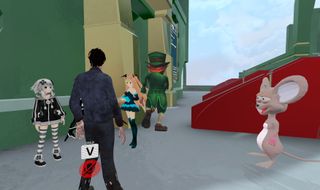
Why this matters
In preparation for this article I put out a call for stories from folks who had experience with social life sims like Second Life and Sony's ill-fated successor, PlayStation Home. But people I spoke to also brought up IMVU and Habbo Hotel, along with more contemporary games like Avakin Life and VR Chat. Jessie May, player support lead for Avakin Life, captured the sentiment felt by Drax and every single player I spoke to—that the appeal of these virtual worlds was in the freedom to explore yourself and experiment with new personalities in new social circles.
"The ability to be whoever you want to be is hugely appealing, especially with young people still discovering themselves," May explained. "Our virtual worlds help our players come to terms with who they really are and can fully express themselves, without that real life social anxiety we often felt as teens growing up. I love hearing about our players who have formed deep, meaningful connections, and that’s something that can never be replicated."
"Silicon Valley needs to understand that for a lot of people, [a VR headset] does not mean an increased sense of being there"
Bernhard "Draxtor" Drax
For all Facebook and Microsoft's talk of connecting people through lifeless 3D avatars and VR conference calls, there's an ignorance to the ways players are always finding community in virtual spaces. We don't go into cyberspace to have business meetings—we do it to meet strangers across continents, to pretend to be things we're not and discover people we are, to create hyper-specific fantasies and yes, to recognise the elephant in the room, to engage in a whole load of weird virtual sex.
As Drax notes, total physical immersion is almost besides the point: "The secret sauce of [Second Life] is community. Loads of people feel completely immersed although they have no headset. I am personally psyched about where headset tech goes but Silicon Valley needs to understand that for a lot of people, this does not mean an increased sense of being there. The level of perceived immersion has to do with what people contribute to their communities".

Ultimately, the metaverse is a hard concept to define. Hell, the term "metaverse" has been kicking around since the '90s, used to describe everything from early multi-user dungeons to Roblox and Fortnite, with Microsoft even claiming Halo and Minecraft as metaverses. Many companies, like Dropbox (the cloud storage company that promised this month to "enter the metaverse"), are simply throwing out the term to please investors, with nothing beyond vague allusions meant to prove they're on the cutting edge of technology.
Reality check
But let's say Meta is right, and the metaverse will see you pop on a mixed-reality pair of glasses to enter an entirely new and virtual layer of reality. That's a tough sell for the thousands who've spent decades using social online games to supplement their real life. Zuckerberg's future promises to let you view your mum's kitchen in 3D. Second Life's present lets you be a pint-sized furry hosting slam poetry nights in outer space.
Meta's future is many years away, and through sheer force of clout it might even be able to pull it off. Facebook's history of actively destroying democracy is testament to that much. But metaverses, as we know them, aren't fuelled by big brands and big money—with Second Life veteran James Curio telling me that he isn't alone thinking that Facebook is "amongst the worst to lead the charge" into a new era of digital worlds.
We're going to keep hearing about metaverses for months to come, but don't be fooled. The metaverse has been here for years, and it's already bigger, bolder and more wonderfully bizarre than anything Facebook could hope to offer.

20 years ago, Nat played Jet Set Radio Future for the first time, and she's not stopped thinking about games since. Joining PC Gamer in 2020, she comes from three years of freelance reporting at Rock Paper Shotgun, Waypoint, VG247 and more. Embedded in the European indie scene and a part-time game developer herself, Nat is always looking for a new curiosity to scream about—whether it's the next best indie darling, or simply someone modding a Scotmid into Black Mesa. She also unofficially appears in Apex Legends under the pseudonym Horizon.
